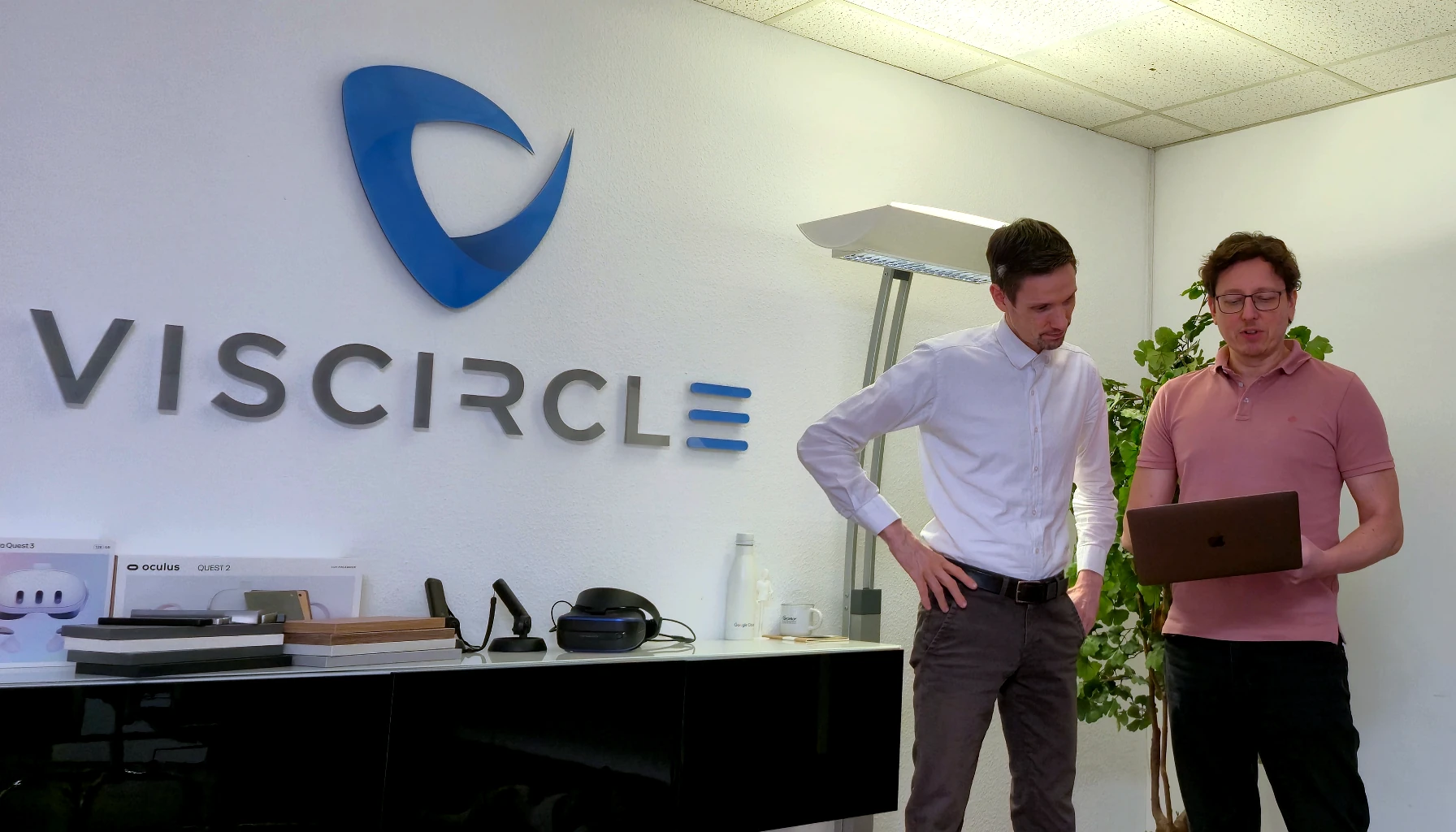3D Configurator
Bring products to life with a 3D configurator
Table of Contents
1. What is a 3D configurator?
A 3D configurator allows products to be customised directly in the browser – with visual feedback in real time. Users can interactively select variants such as colours, materials or features and immediately view the result.
Through the integration of augmented reality, the configured product can also be displayed in a real-world environment. This supports informed purchasing decisions, increases user loyalty and improves the quality of the digital product presentation.
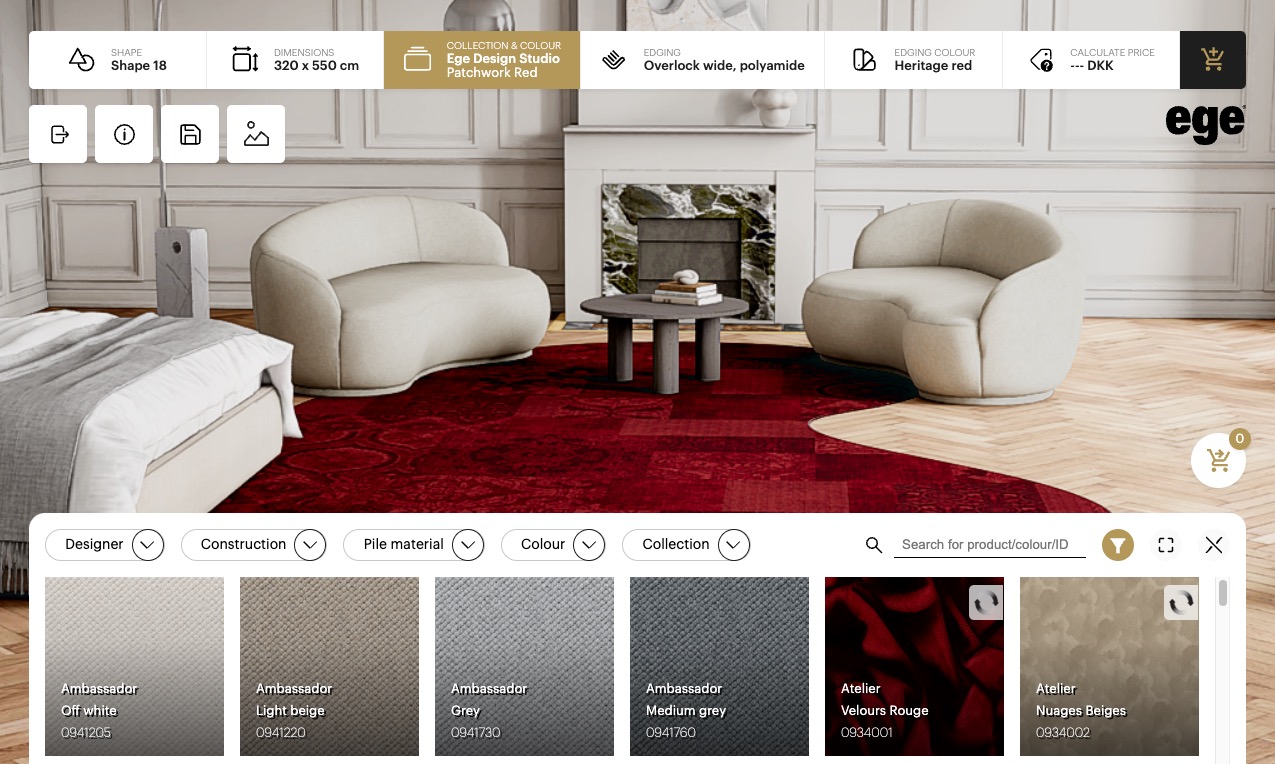
2. Functionality and technology (WebGL)
The technical basis of a modern 3D configurator is usually WebGL (Web Graphics Library) – a browser technology that enables hardware-accelerated 3D graphics directly on the web. WebGL brings the computing power of modern graphics cards to the browser and allows complex 3D scenes to be displayed without additional plugins or external software. This allows users to interactively view a product from all sides in the 3D configurator, zoom in and experience individual customisations in real time.
Two key components are crucial for this: high-quality 3D models created in special 3D content creation software and a rendering engine that dynamically visualises the model in the 3D configurator.
Frameworks such as Three.js facilitate development by providing standardised functions such as camera control, light calculation and material representation. WebGL-based 3D configurators can be used across platforms – on desktop computers as well as on mobile devices – and can be seamlessly integrated into websites or online shops. Users can rotate the model, change perspectives or switch between different product options using the mouse or touch gestures.
As soon as changes are made – for example, to colour or material – the rendering engine implements them immediately in the 3D configurator. The result is direct visual feedback and a smooth, interactive user experience that goes far beyond the capabilities of classic 2D configurators.
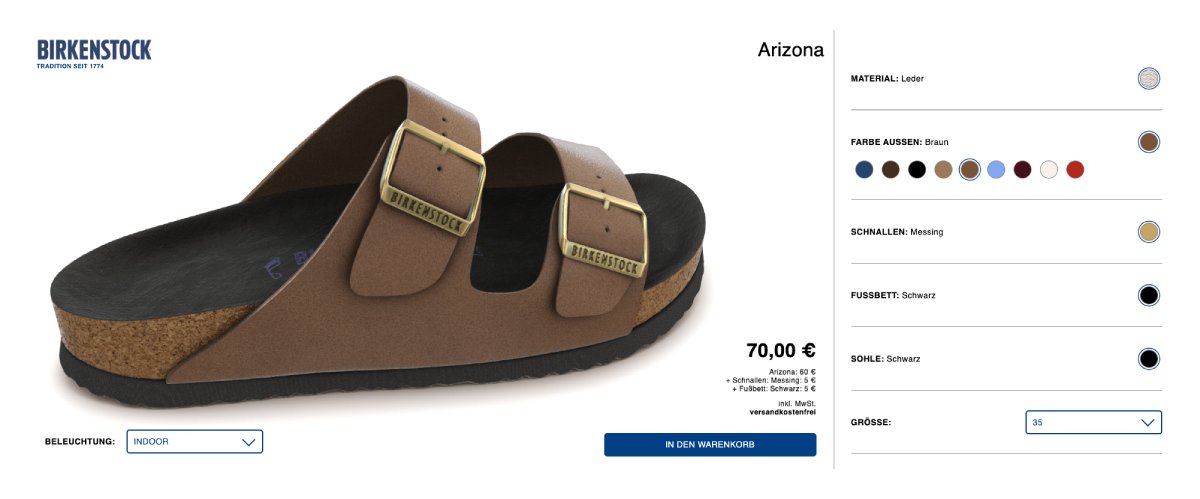
3. Advantages of 3D configurators
The use of 3D configurators offers a number of advantages for both companies and end customers:
Increased customer loyalty:
A 3D configurator helps visitors interact with the product and brand for longer. Interactive product visualisation allows customers to explore a product in a playful way, customise it and thus enjoy a personalised shopping experience.
The ability to try out different variants directly in the 3D configurator – for example in terms of colour, features or materials – increases interest and time spent on the website. Studies show that users of interactive product configurators are more likely to choose higher-value options and remain in closer contact with the brand.
Better purchasing decisions:
A 3D configurator shows all customisations in real time, allowing customers to see exactly what their customised product will look like. This visual transparency supports informed and more conscious purchasing decisions.
In e-commerce, the use of a 3D configurator has been proven to contribute to higher conversion rates and lower return rates, as customers get a realistic picture of the end product. The three-dimensional view reduces uncertainty in the purchasing process and helps to avoid mispurchases.
Improved customer experience:
The ability to design products according to their own ideas increases satisfaction and creates a personalised user experience. A 3D configurator encourages active engagement with the product, thereby enhancing the customer experience in the digital sales process.
When customers can immediately see the result of their configuration in 3D, they develop a direct connection to the product – an effect that has been proven to increase the likelihood of a sale. The 3D configurator brings product variants to life, thereby supporting a compelling presentation in online retail.
Competitive advantage for companies:
Companies that use a 3D configurator position themselves as technologically advanced and customer-oriented. The ability to visualise products digitally and in a personalised way creates a differentiated offering and can strengthen brand loyalty in the long term.
A 3D configurator also supports the sales process: virtual prototypes make it possible to precisely capture customer wishes during the conversation and respond to them in a targeted manner. This increases sales efficiency and improves customer communication. Overall, the use of a 3D configurator contributes to increased sales and long-term customer loyalty.
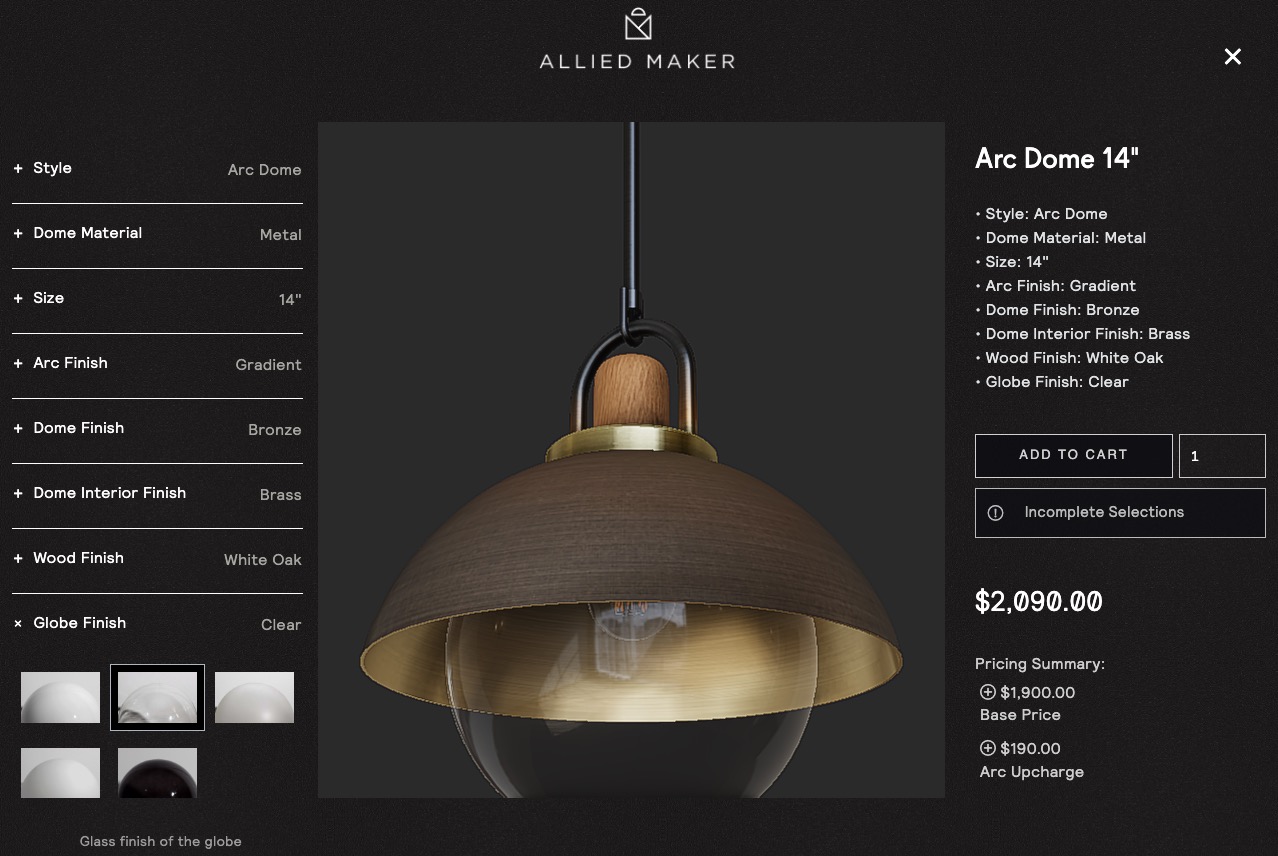
4. Areas of application and industries
3D configurators have proven useful in numerous industries, wherever products can be customised or come in many different variants. Typical areas of application include:
5. Augmented reality and 3D configurators
An increasingly important trend in connection with 3D configurators is the use of augmented reality (AR). AR expands virtual product configuration by adding the option of superimposing the configured 3D model onto the real environment. Modern web AR technologies make it possible to place an object in a room directly in the browser and without an additional app using the camera of a smartphone or tablet. For example, a customer can view a piece of furniture they have previously configured online in their own home via AR to check its size, proportions and style in a real context. This seamless link between the configurator and AR creates an even more immersive shopping experience. Customers can walk around the virtual product, view it from different angles in their room and even share snapshots of it.
This offers enormous advantages for retailers: customers gain additional confidence in their purchase decision, which further increases the conversion rate, and satisfaction rises as unpleasant surprises (such as ‘it doesn’t fit in the living room’) are avoided. Augmented reality is therefore an ideal complement to 3D configurators – especially in industries such as furniture, interior design and even the automotive sector. As a service provider, we offer such AR solutions alongside our WebGL configurators to provide our customers with a comprehensive package for modern product presentation.
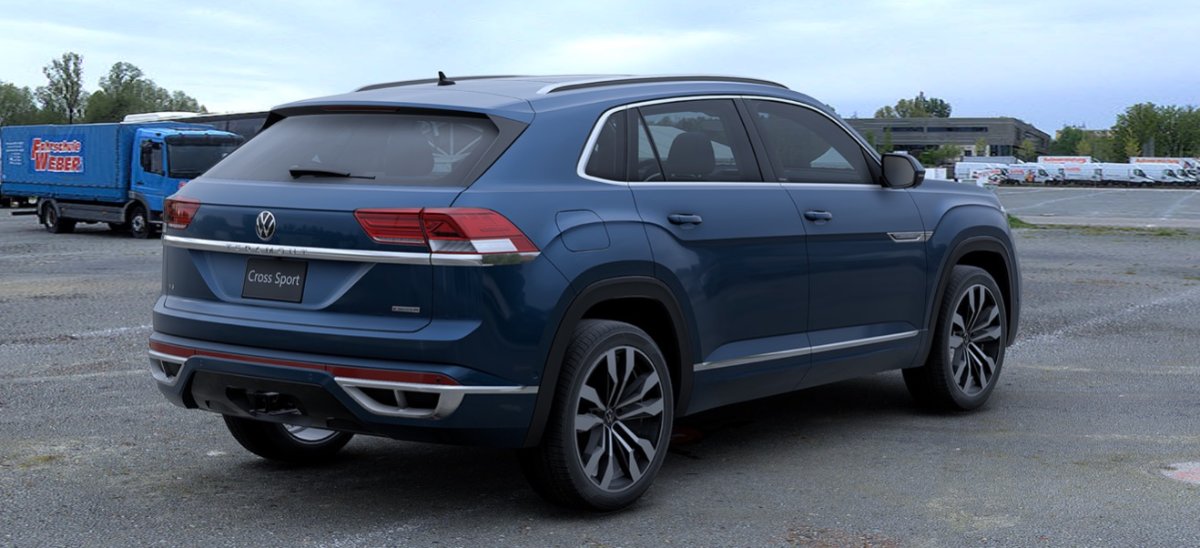
6. VisCircle brings your products to life – digitally and in real life
With our offering at VisCircle GmbH, we help your brand make an impressive appearance – interactive, visual and meaningfully integrated:
What we achieve together:
- We enable your customers to design products in real time – colour, material and variants are displayed directly on the 3D model.
- We use WebGL technology so that all functions work seamlessly in the browser, without external software and on all device types.
- We integrate browser-based augmented reality to display configured products in real spaces – whether it’s a piece of furniture in the living room or a technical device in the work environment.
Your added value clearly presented:
- We increase engagement and conversion: interactive product visualisation leads to longer website visits and motivates purchases.
- We reduce uncertainty in the purchasing decision: the detailed 3D product preview minimises unwanted returns.
- We strengthen your brand: High-quality visualisation and modern technology communicate innovative strength and customer focus.
How we support you step by step:
From the initial idea to individual design to technical implementation and integration, we accompany you – tailored to your corporate design, your IT landscape and with optional AR integration.
Looking ahead:
Technologies such as WebGL are constantly evolving – for example, through AI-supported product recommendations, real-time interactions or the integration of sustainability information. We keep pace and move your brand forward in the long term.
If you want your products to be designed interactively, presented realistically and staged in context, please feel free to contact us.
